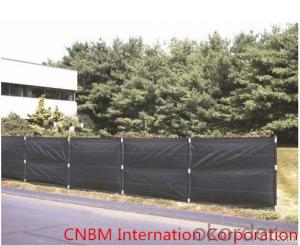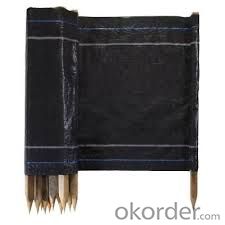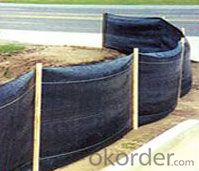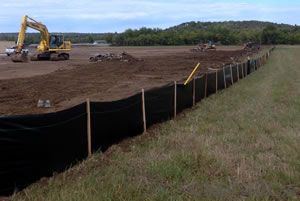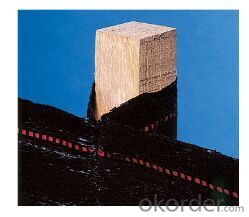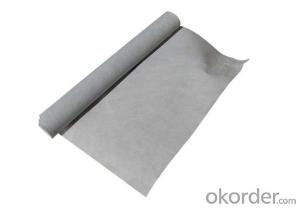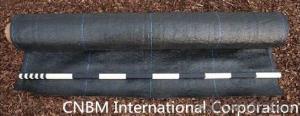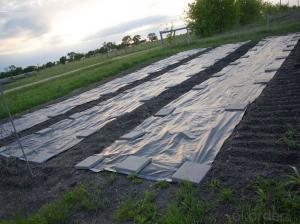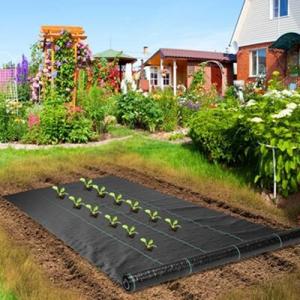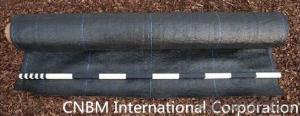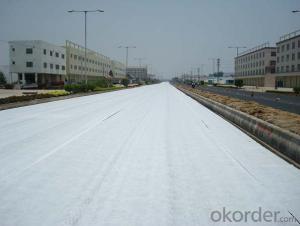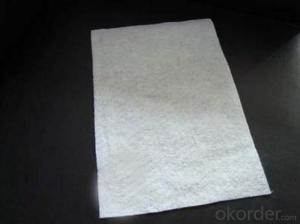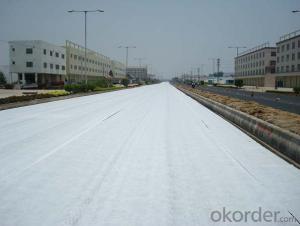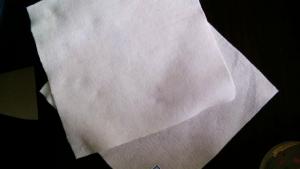Silt Fence/Weed Barrier Fabric/Woven Fabric
- Loading Port:
- Qingdao
- Payment Terms:
- TT OR LC
- Min Order Qty:
- 1000 roll
- Supply Capability:
- 100000 roll/month
OKorder Service Pledge
OKorder Financial Service
You Might Also Like
Specification
1.Silt Fence Description:
A silt fence, also referred to as a filter fence, is a structure composed primarily of geotechnical fabric and that is used as a form of sediment control.These temporary barriers are relatively low in cost, especially when compared to the damages they can prevent. They keep loose soils from traveling into local bodies of water and they also minimize the impact that various forms of development can have on surrounding wildlife.


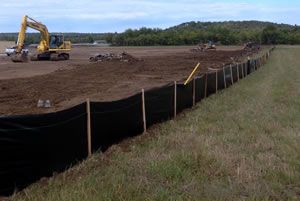

2.Weed Barrier Fabric Functions and Features:
1)Excellent weed control
2)Excellent UV resistance
3)Moisture,fertilizers,air reach plants to allow for healthy soil
4)Good water and air permeability
5)Exceptional toughness and strength
6)Durable,tear-resistant,anti-rot and anti-mildew
7)Light weight,easy to install,follows natural ground contours
8)Ideal for use in landscaped beds,under decks and walkways
9)Fashionable design,high quality,competitive price
10)Long service life
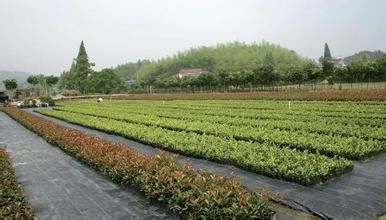
3. Weed Barrier Fabric Usage:
1.Prevent leakage disposal in landfill or waste water or waste dregs disposing field.
2.River bank ,lake dam ,mine remainings ,resevoir ,tunnel ,liquid storage pool(pit ,mine)
3.Preventing leakage in subway ,basement ,tunnel ,hole .
4.Anti-salt leakage in roadbed and other ground sill.
5.The plane direction laying of dam ,the vertical direction laying for ground sill.used in the construction fence and waste material field.
6.Used in ground sill of road ,highway ,railway and waterproof layer of welling clay and wet collapsed loess.
7.Preventing leakage on rooftop.
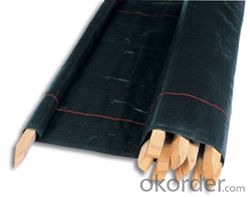

4. FAQ:
Q1: What is your minimum order quantity?
A:The minimum order quantity is 5000 ,but it is negotiable.
Q2:What is your payment terms?
A: T/T,Western Union,Paypal,L/C...
Q3:What is your delivery time?
A:Production time usually costs 2-20 days.
Waiting to cooperate with you!
- Q: How do geotextiles improve the performance of retaining walls?
- Geotextiles improve the performance of retaining walls by providing reinforcement and stability to the soil behind the wall. They act as a barrier to prevent soil erosion and help distribute the load evenly, reducing the pressure on the wall. Additionally, geotextiles allow for the drainage of water, preventing buildup behind the wall and minimizing the risk of hydrostatic pressure, which can cause wall failure.
- Q: What are the specifications for geotextiles used in transportation projects?
- Geotextiles used in transportation projects typically have specific specifications in terms of their weight, thickness, tensile strength, permeability, and durability. These specifications ensure that the geotextiles can effectively separate, reinforce, or filter materials in the transportation infrastructure, such as roads, railways, or landfills. Additionally, they must meet certain industry standards and regulations to ensure their effectiveness and longevity in these projects.
- Q: What are the factors to consider when selecting a geotextile for a specific application?
- When selecting a geotextile for a specific application, several factors need to be considered. These include the desired function of the geotextile, such as separation, filtration, drainage, reinforcement, or erosion control. The site conditions, including soil type, slope, and climate, also play a crucial role in determining the appropriate geotextile. Other factors to consider include the expected loads and stresses, installation requirements, longevity, and cost-effectiveness. It is important to consult with an experienced geotechnical engineer or geotextile specialist to ensure the right selection for the specific application.
- Q: How do geotextiles help with vegetation establishment?
- Geotextiles help with vegetation establishment by providing a stable and favorable environment for plant growth. They act as a barrier against weed growth, erosion, and sedimentation, while allowing water and nutrients to pass through. Geotextiles also protect newly planted vegetation from wind damage and promote healthier root development, leading to successful establishment and growth of plants.
- Q: What are the specifications for geotextiles and geogrids commonly used on expressways?
- You are the production, or sales, or procurement, the question asked, what model is the designer's decision
- Q: What are the design considerations for geotextile-reinforced slopes?
- Some of the key design considerations for geotextile-reinforced slopes include the selection of appropriate geotextile material, the determination of proper reinforcement spacing and orientation, the assessment of slope stability and soil characteristics, and the consideration of environmental factors such as water drainage and vegetation. Additionally, the design should take into account the expected loads and stresses on the slope, as well as potential erosion and long-term durability of the geotextiles.
- Q: How do geotextiles improve the performance of landfills?
- Geotextiles improve the performance of landfills by serving as a barrier that prevents soil erosion and filters out harmful substances. They also provide reinforcement and stability to the landfill structure, reducing the risk of slope failure or settlement. Additionally, geotextiles promote better drainage and help control leachate flow, improving overall landfill efficiency and environmental protection.
- Q: How are geotextiles installed?
- Geotextiles are typically installed by first preparing the ground surface, removing any vegetation or debris. Then, the geotextile fabric is unrolled and laid over the prepared area. It is important to ensure that the fabric is properly aligned and overlaps are secured. The geotextile is then anchored or weighted down to prevent any movement. Depending on the specific application, additional layers of geotextile or other materials may be added. Overall, proper installation techniques are crucial to ensure the effectiveness and longevity of geotextile applications.
- Q: What are the considerations for geotextile selection in coastal engineering projects?
- When selecting geotextiles for coastal engineering projects, several factors should be considered. These include the intended application, site conditions, longevity requirements, and environmental considerations. The geotextile's strength, permeability, and durability must align with the project's specific needs to effectively control erosion, stabilize sediment, or protect against wave action. Additionally, factors such as UV resistance, resistance to biological degradation, and compatibility with other materials used in the project should be evaluated to ensure long-term success and minimize negative impacts on the coastal ecosystem.
Send your message to us
Silt Fence/Weed Barrier Fabric/Woven Fabric
- Loading Port:
- Qingdao
- Payment Terms:
- TT OR LC
- Min Order Qty:
- 1000 roll
- Supply Capability:
- 100000 roll/month
OKorder Service Pledge
OKorder Financial Service
Similar products
Hot products
Hot Searches
Related keywords
